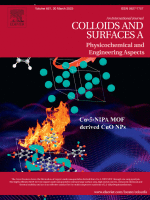The removal of heavy metals pollutants from contaminated water by adsorption is one of the most effective physicochemical techniques. The recycling approach of residual biomass into adsorbent materials, has received increasing attention for biomass valorization. In effort for Orange peel (OP) biomass valorization, the conversion of OP into phosphorous (P)− doped activated carbons (ACP) materials was investigated via phosphoric acid thermochemical activation at 400–800 ºC. Thus, two groups of ACP materials were derived from OP, with a low and a high (acid: OP) ratios termed as ACPL and ACPH, respectively. The materials were characterized by many standard techniques including: XRD, Raman spectroscopy, XPS, FTIR-ATR, HRTEM, EDX and elemental mapping. The materials were structured in nanosized (2–3 nm) amorphous graphite plate− like nanoparticles composed of few graphene layers, showed high specific surface area, SBET, and slit-shaped mesoporosity. The application of the ACPL and ACPH materials as adsorbents were investigated for Cr(VI) ions, batch adsorption from solutions, by atomic absorption spectroscopy. Generally, the adsorbents showed pronounced adsorption capacity (up to 100.4 mg/g), which was for ACPH > ACPL, and was increased with increasing of the activation temperature. Therefore, different adsorption isotherms, thermodynamic and kinetic models were investigated. Accordingly, the adsorption isotherms of ACPH adsorbents were best fit the Langmuir isotherm model, whereas ACPL adsorbents were best fit the Freundlich isotherm model. The adsorption process for the most active sample was exothermic, followed the pseudo-second-order kinetics and showed recyclability of the adsorbents. This indicates that orange peel biomass can be valorized and converted into very valuable efficient adsorbent for Cr(VI) removal.


